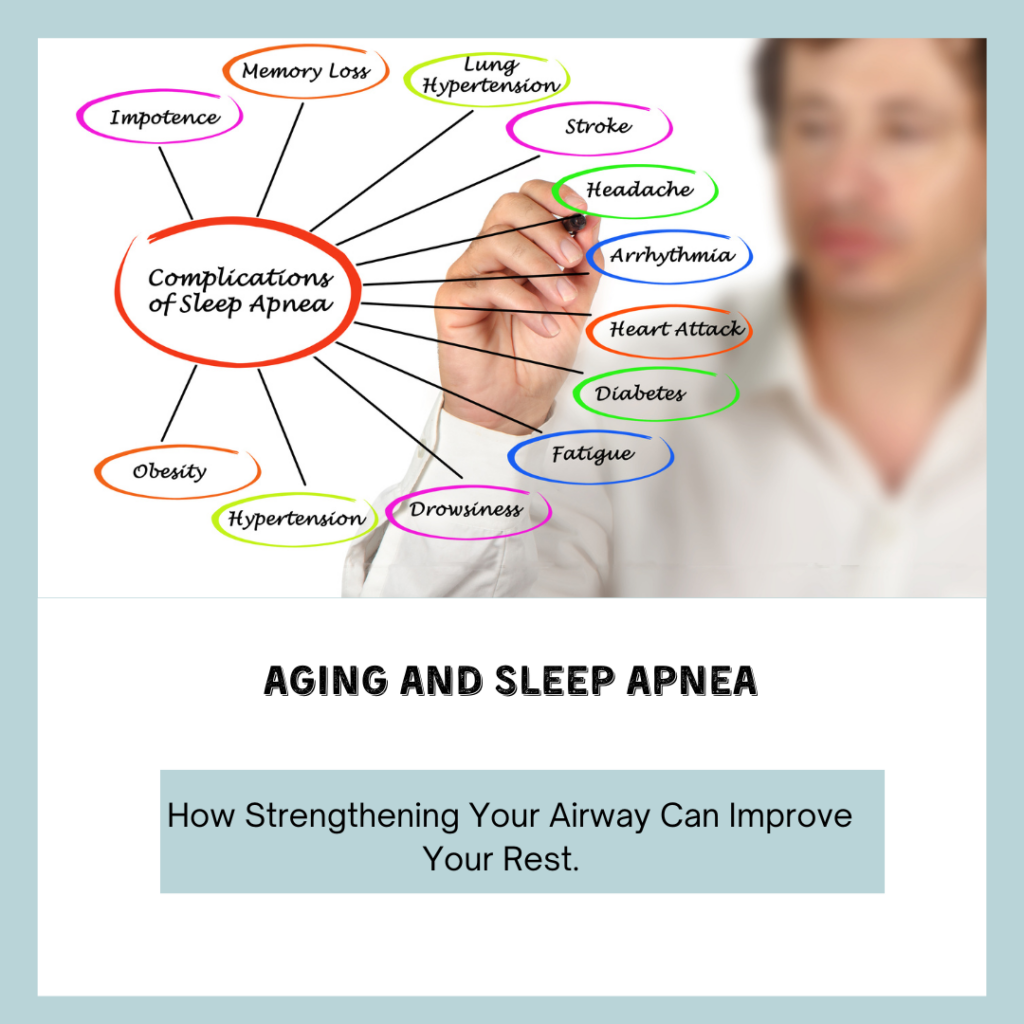Sleep should be simple, you lie down, close your eyes, and wake up refreshed, right? If only! For many adults, sleep apnea turns what should be a peaceful night into a battle for breath, leaving you feeling like you ran a marathon in your sleep (minus the calorie burn).
But here’s the good news: You don’t have to suffer through groggy mornings and endless cups of coffee forever. Strengthening the muscles in your mouth and throat with orofacial myofunctional therapy (OMT, just don’t google OMT as it will show osteopathic medicine) can help keep your airway open and your sleep uninterrupted. No machines, no meds, just a natural way to get better rest. Let’s break it down.
What Happens to Your Airway as You Age?
Aging brings wisdom, confidence… and, unfortunately, a little muscle sagging. And we’re not just talking about the ones you see in the mirror. The muscles in your mouth, tongue, and throat also lose tone over time, making them more likely to collapse while you sleep. That’s when sleep apnea strikes, causing repeated breathing interruptions that jolt you awake (even if you don’t remember it happening).
Other sneaky contributors to sleep apnea include:
- A little extra padding. Weight gain can put pressure on your airway, making it harder to stay open.
- Hormonal changes. They affect more than just mood swings—they can also weaken airway muscles.
- Nasal congestion. Struggling to breathe through your nose forces you to mouth-breathe, which isn’t great for keeping airways sturdy.
- Poor tongue posture. Yep, that’s a thing. A lazy tongue that rests low in your mouth can block airflow.
If left unchecked, sleep apnea can lead to serious health problems like high blood pressure, heart disease, and feeling like a zombie every morning (minus the cool Hollywood makeup).
How Can Orofacial Myofunctional Therapy Help?
Think of orofacial myofunctional therapy as a personal trainer for your airway. By strengthening the muscles in your tongue, throat, and face, you can keep your airway in shape and prevent it from collapsing while you sleep.
Studies show that OMT can significantly reduce the severity of sleep apnea by:
- Keeping your tongue in check. A stronger tongue won’t fall back into your throat like a lazy teenager on the couch.
- Encouraging nasal breathing. Less mouth breathing means less snoring (your partner will thank you).
- Making your airway more stable. A strong, well-supported airway is less likely to collapse, meaning fewer interruptions in your sleep.
Unlike CPAP machines, which manage symptoms, OMT helps work on the actual problem, weak airway muscles. It’s like choosing to get stronger instead of just using duct tape to hold things together. This can make the symptoms much more manageable.
Take Control of Your Sleep Health
If sleep apnea has been turning your nights into a noisy, restless mess, it’s time to take action. Orofacial myofunctional therapy offers a simple, natural way to strengthen your airway and improve your sleep.
Consider booking an assessment to see if I can help you. If you already know that I can go right to the exam where we area able to look at your symptoms in depth. With a little effort (and quite a few funny-looking exercises), you could be on your way to quieter nights, better sleep, and mornings where you actually feel like getting out of bed.
Sweet dreams!

